
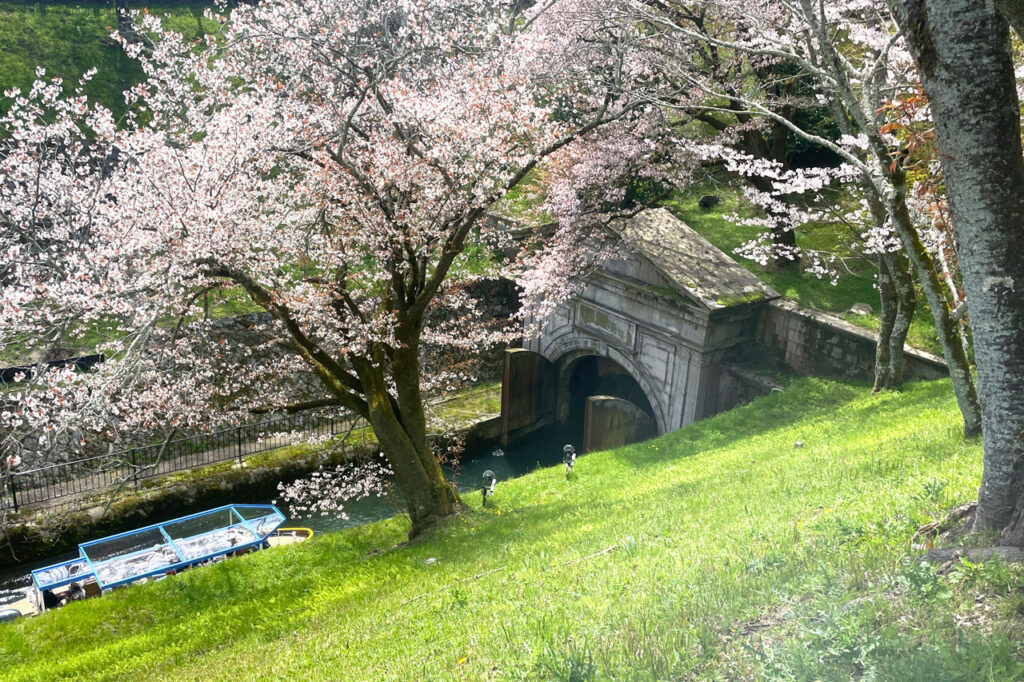

The Biwako Sosui Boat, which tours the Biwako Sosui, a waterway connecting Lake Biwa and Kyoto, operates seasonally in spring and autumn from the Mitsui Temple boarding area in Otsu City to the Keage boarding area in Kyoto City. The boat operates seasonally in spring and fall from the Mitsuiidera boarding and disembarking point in Otsu City to the Keage boarding and disembarking point in Kyoto City on the No. 1 Sosui, but with the completion of the renovation of the Otsu lock gates, which regulate the water level of the Sosui and Lake Biwa, a Biwako-Otsu Port service (extended service) will begin in the spring of 2024.
[The first canal was completed in 1890 and the second in 1912. The first and second canals were completed in 1890 and 1912, respectively, and were used for drinking water supply and hydroelectric power generation, contributing greatly to the modernization of Kyoto. In the past, boat transportation of people and cargo was also active, but its use declined due to the rapid development of automobiles and railroads, and it disappeared after 1951. In 2018, the 150th anniversary of the Meiji Restoration, it was revived as a sightseeing boat (Biwako Sosui Boat). The great achievements of the Meiji era and the beauty of the scenery along the Sosui are still being conveyed to the present.
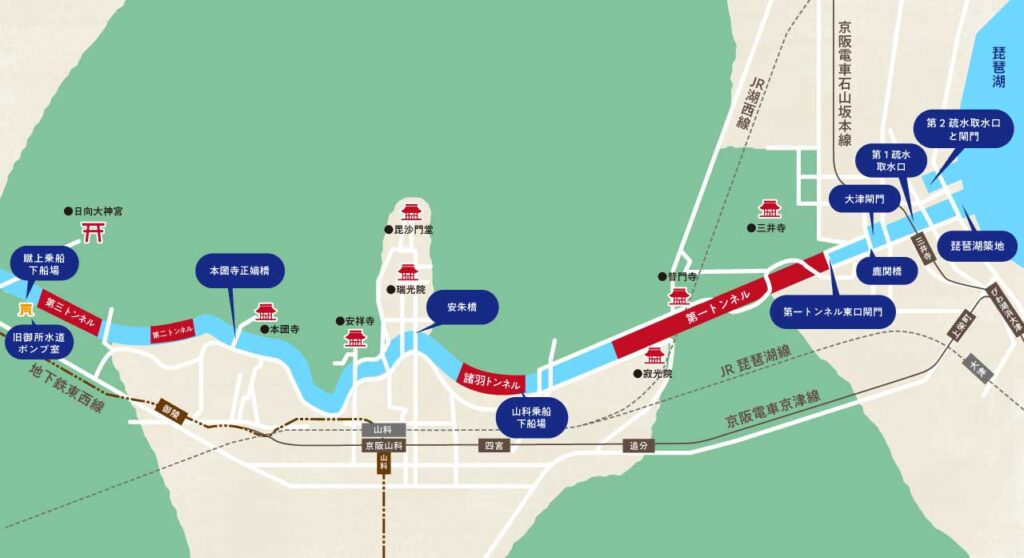
Route from Lake Biwa and Otsu Port embarkation and disembarkation point to Kegami embarkation and disembarkation point. You can enjoy the history of Biwako Sosui and nature along the waterway.

[The Biwako Sosui Boat runs approximately 9.3 km from the embarkation/disembarkation point at the Port of Otsu on Lake Biwa to the Kegami embarkation point on the First Sosui Canal. The time required for both the downbound and upbound services differs, with the downbound service from Otsu to Kyoto taking about 85 minutes and the upbound service in the opposite direction taking about 65 minutes. This difference is due to the fact that the downbound service utilizes the flow of the Sosui River, whereas the upbound service travels against the flow of the river, making greater use of the ship's engine than the downbound service.
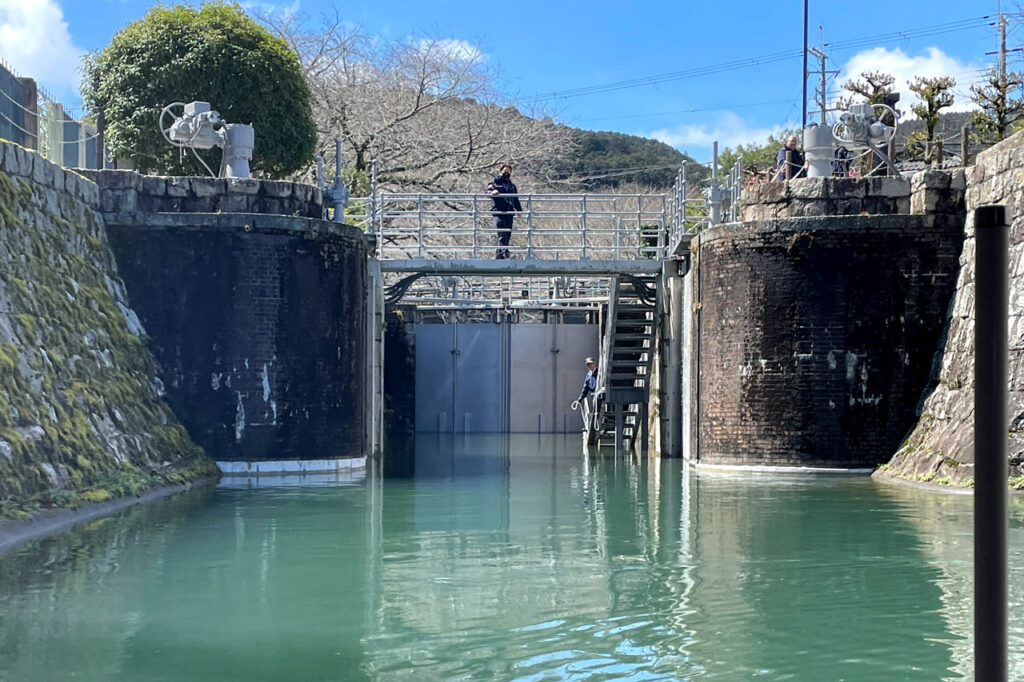
The Otsu Locks are Japan's first full-scale Western-style brick lock gate, following Ishii Locks (Miyagi Prefecture) built on the Kitakami River, and are a valuable heritage of modernization. The ability to experience the change in water level caused by the opening and closing of the locks is a major attraction of Sosui boats.

The Biwako-Otsu Port service (downbound) departs from the embarkation/disembarkation terminal at Biwako-Otsu Port, heading from Hamaotsu to Mitsui Temple on Lake Biwa to Biwako Tsukiji, the gateway to the 1st Sosui Canal. It passes by the 1st and 2nd Sosui intakes and under the railway bridge of Keihan Railway. If your timing is right, you can see the train from right under the bridge.
Next, the boat stops between the gates of the Otsu Locks. It waits for the water level to drop to the same level as the Sosui Canal before departing. Otsu Locks is a facility to overcome the difference in water levels between Lake Biwa and the Canal by alternately opening and closing two sluice gates, allowing passage between the two. With the extension of the route to Lake Biwa and Port of Otsu due to the electrification of the locks, visitors can now experience the change in water level caused by the opening and closing of the locks from the top of a ship.
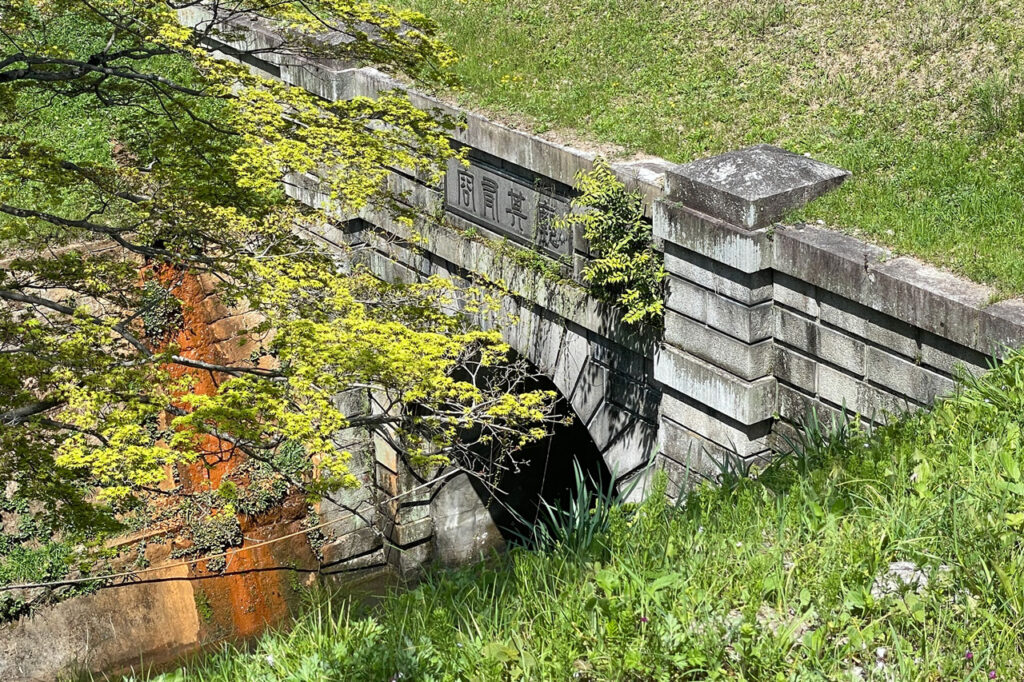
A signboard at the exit of the first tunnel. It was written by Aritomo Yamagata, and it means that the land with the Sosui is deep and spacious.

Departing from Otsu Locks, the boat heads for the East Entrance Cave of the First Tunnel, which leads to Yamashina. On the way, near the Shikaseki Bridge, visitors can enjoy the luxury of viewing cherry blossoms and fresh green maple trees in spring and early summer, and autumn leaves in fall from the boat.
At the entrance of each tunnel, there is a plaque, called a hengekaku, which is a stone with words engraved on it. The characters were written by Hirobumi Ito and other leading politicians of the Meiji period (1868-1912), and are historically very valuable. The Otsu side has a hollowed-out, recessed design, while the Kyoto side has a raised, raised design. It is a pleasure to discover the meanings of the characters on the Otsu side and the differences in design.
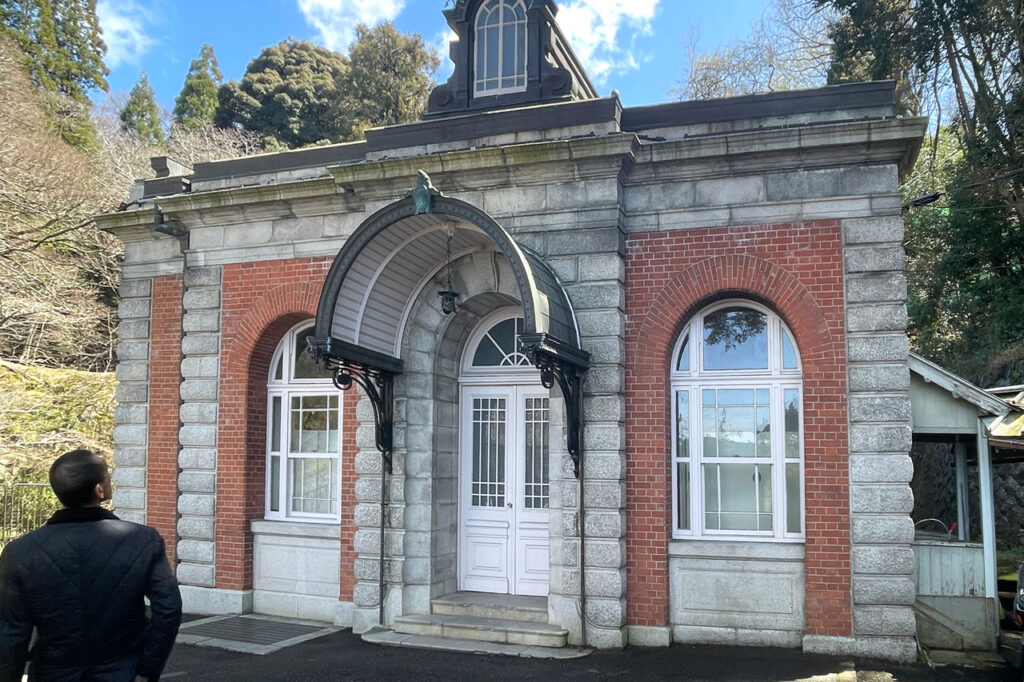
Former Gosho Waterworks Pump Room. The building has a stately design with a columned balcony, and was registered as a National Tangible Cultural Property in 2020.

Passing through the Yamashina boarding and disembarking place from the first tunnel and passing through the Moroha Tunnel, you will reach the Aju Bridge, which crosses the approach to [Bishamondōdo]. The area near Ajubashi Bridge is a famous flower spot where cherry blossoms and rape blossoms carefully cultivated by local residents bloom in spring, and the beautiful flower show can be enjoyed from the boat.
Passing under the vermilion-lacquered Honkoku-ji Temple Shogetsugen Bridge, which crosses diagonally over the canal, and passing through the short second tunnel and the third tunnel that continues, you will reach the Keage boarding and disembarking area. The former Gosho Waterworks Pump Room, located near the boarding and disembarking place, used to supply water for fire prevention to the Kyoto Imperial Palace as the Gosho Waterworks. [It was designed by Tokuma Katayama, an architect known for his work at the Kyoto National Museum, and constructed by the Ministry of the Imperial Household, and is registered as a Tangible Cultural Property of Japan. It is a great attraction to be able to view this valuable historical heritage up close.
Feel the gentle flow of the Sosui and take a ride on the Biwako Sosui Boat, where you can encounter the history and romance that laid the foundation of modern Kyoto and the beautiful scenery from the waterway.
Over 600 interviews per year! An order site carefully selected by the editors who knows Kyoto and Shiga.
nowOfficial LINE friend registration500 yen OFF coupon is being issued!
Distributed every Friday morning at 8:00 am! From new restaurant information to event information that we want to share with you, We deliver articles about Kyoto that are useful to know. About 20,000 people have registered.Click here to add a friend!
 News
News Feature article
Feature article Featured event
Featured event